TechRadar Verdict
The Asus ROG Zephyrus sets a high bar for powerful, thin gaming laptops with exceptional performance, whisper quiet operation and a truly innovative design.
Pros
- +
Astonishingly powerful
- +
Innovative and quiet cooling
- +
Sharp, futuristic aesthetic
- +
Excellent display and speakers
Cons
- -
Laughable battery life
- -
Poor keyboard ergonomics
- -
No SD card slot
Why you can trust TechRadar
Until the Zephyrus came around, there were just two kinds of gaming laptops: big, powerful behemoths or the ones thin and portable enough to fit in your backpack with just enough power to eke out 1080p gaming. Neither have been especially quiet while running games.
However, now that we’ve entered a new generation of Nvidia Max-Q laptops with technology that allows them to be up to three times thinner and faster, things are changing. The Asus ROG Zephyrus GX501 sits comfortably at the top of this new breed of gaming machines and it offers the power of a high end desktop in a package that’s almost as thin as the average Ultrabook.
It might sound impossible but, believe it or not, Asus has pulled it off without breaking a sweat through its ROG Zephyrus GX501. It might compromise a bit on battery life, but this gaming laptop still comes in at the head of its class with a brilliant and innovative design, a color-rich display, amazing speakers and, most importantly, stellar gaming performance.
Here is the Asus ROG Zephyrus GX501 configuration sent to TechRadar for review:
CPU: 2.8GHz Intel Core i7-7700HQ (quad-core, 6MB cache, up to 3.8GHz)
Graphics: Nvidia GeForce GTX 1080 (8GB GDDR5X VRAM); Intel HD Graphics 630
RAM: 16GB DDR4 (2,400MHz)
Screen: 15.6-inch, Full HD (1,920x1,080) anti-glare, wide-view panel (120Hz refresh rate with Nvidia G-Sync)
Storage: 512GB M.2 PCIe x4 SSD
Ports: 1 x Thunderbolt 3 (USB Type-C), 4 x USB 3.0, 1 x HDMI 2.0, headset jack
Connectivity: 802.11ac Wi-Fi, Bluetooth
Camera: HD webcam
Weight: 4.85 pounds (2.2kg)
Size: 14.9 x 10.3 x 0.66-0.7 inches (37.9 x 26.2 x 1.69-1.79cm; W x D x H)
Price and availability
The stellar performance of the Asus ROG Zephyrus comes at a price – a very high price. Priced at $2,699 or AU$3,659 (about £2,105), the configuration we’ve reviewed is highest-end version of the Zephyrus you can get.
It’s far more than we’ve ever seriously thought about dropping on a 15-inch gaming laptop, especially considering increasingly more affordable models, like the $1,399 (£1,499, AU$2,249) Gigabyte SabrePro 15 and $1,399 (about £1,100, AU$1,840) Acer Predator Helios 300 – although, these two options come with lesser Nvidia GTX 1060 graphics.
Of course, a big part of that price point comes down to the laptop boasting an Nvidia GTX 1080 and Intel Core i7 processor. In this regard, it’s a few hundred bucks cheaper than the equally capable $2,999 (£2,999, AU$4,029) Acer Predator Triton 700.
Compared to far larger gaming laptops that were once required to achieve the same level of performance, the Zephyrus also proves itself to be a bargain over the $3,999 (£3,799, AU$5,899) Razer Blade Pro and $2,098 or £2,499 (about AU$2,766) MSI GT73VR Titan Pro. That said, these monster machines still have their place in the computing world, if you want an overclockable CPU.
Sign up for breaking news, reviews, opinion, top tech deals, and more.
Back in August, Asus released a lower-end Zephyrus with a smaller hard drive and an Nvidia GTX 1070 for $2,299 or AU$3,119 (about £1,790). This model competes more directly with the $2,074 (£1,999, AU$3,499) Alienware 15 R3 and the $1,299 (£1,703, AU$1,712) Max-Q designed MSI GS63 Stealth Pro.
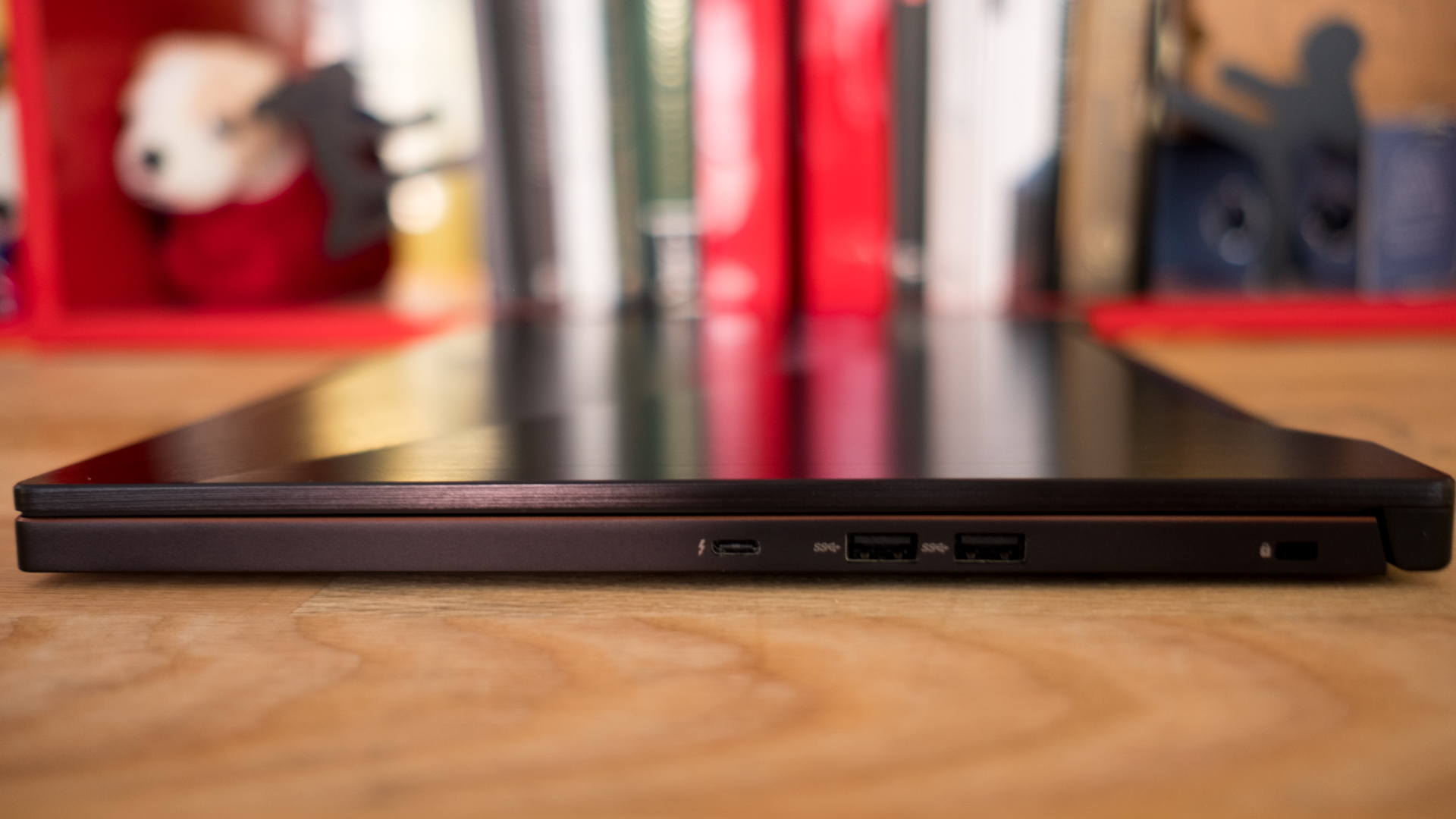
Design
We didn’t think it could be done, but the Asus ROG Zephyrus GX501 actually stuffs an Nvidia GTX 1080 into a 1.79cm-thick (0.7-inch) laptop. That’s not only surprisingly thin for a gaming notebook, it’s slimmer than most traditional laptops, including the compact Dell XPS 15.
To efficiently cool such a svelte package, Asus came up with an innovative design, which sees the bottom panel drop down like a ramp for better airflow. The mechanism engages automatically as you open the Zephyrus, creating a 6mm gap.
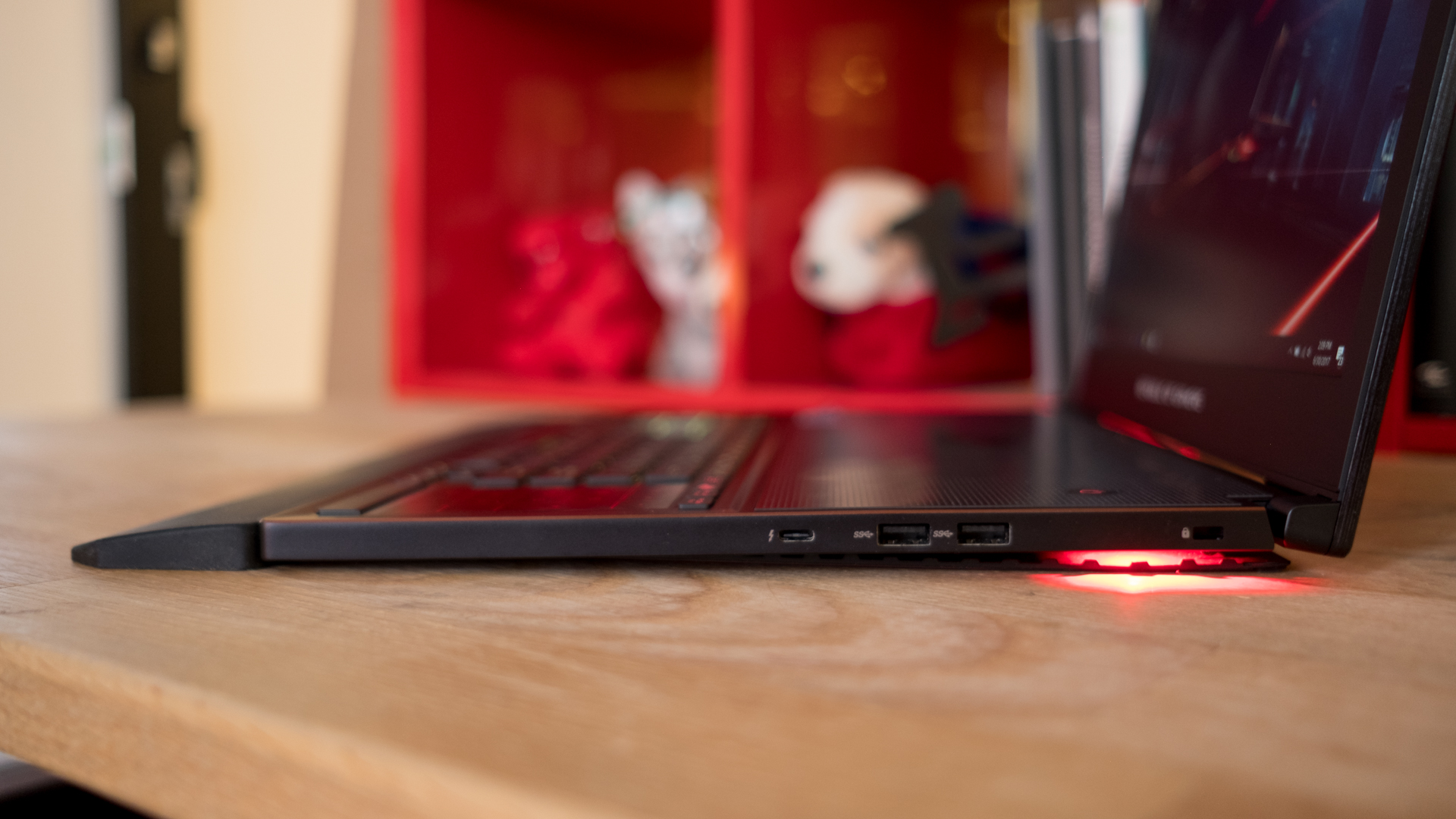
That might sound like a pretty small space for airflow, but Asus has engineered a high-air chamber to give this ultra-thin gaming laptop the cooling capabilities of a much thicker machine.
One caveat to this expandable panel is it ends up feeling flimsy. The underside extension bends to the touch and there’s a slightly springy step to the laptop when you set it on a desk. That said, you won’t really notice the issue outside of carrying around the GX501 from beneath while the screen is open.

Gimmicks and accolades aside, the Zephyrus is a damn beautiful piece of machinery. Asus has gone for a uniquely squared-off design for the metal chassis. Then, the all-black exterior with copper trim adds up to a sharp, futuristic style. The screen lid of the GX501 draws your eyes in with a distinctly geometric design paired with a brushed aluminum finish that fans out in two directions.
Branding on gaming laptops is usually something we tend to just ignore, but the use of the prominent ROG logos over text on the exterior and interior of the laptop are nice touches, too.
Between the overall aesthetics of the laptop and its transforming design, the Zephyrus looks like a gaming laptop pulled from the future, and we love the way it looks.
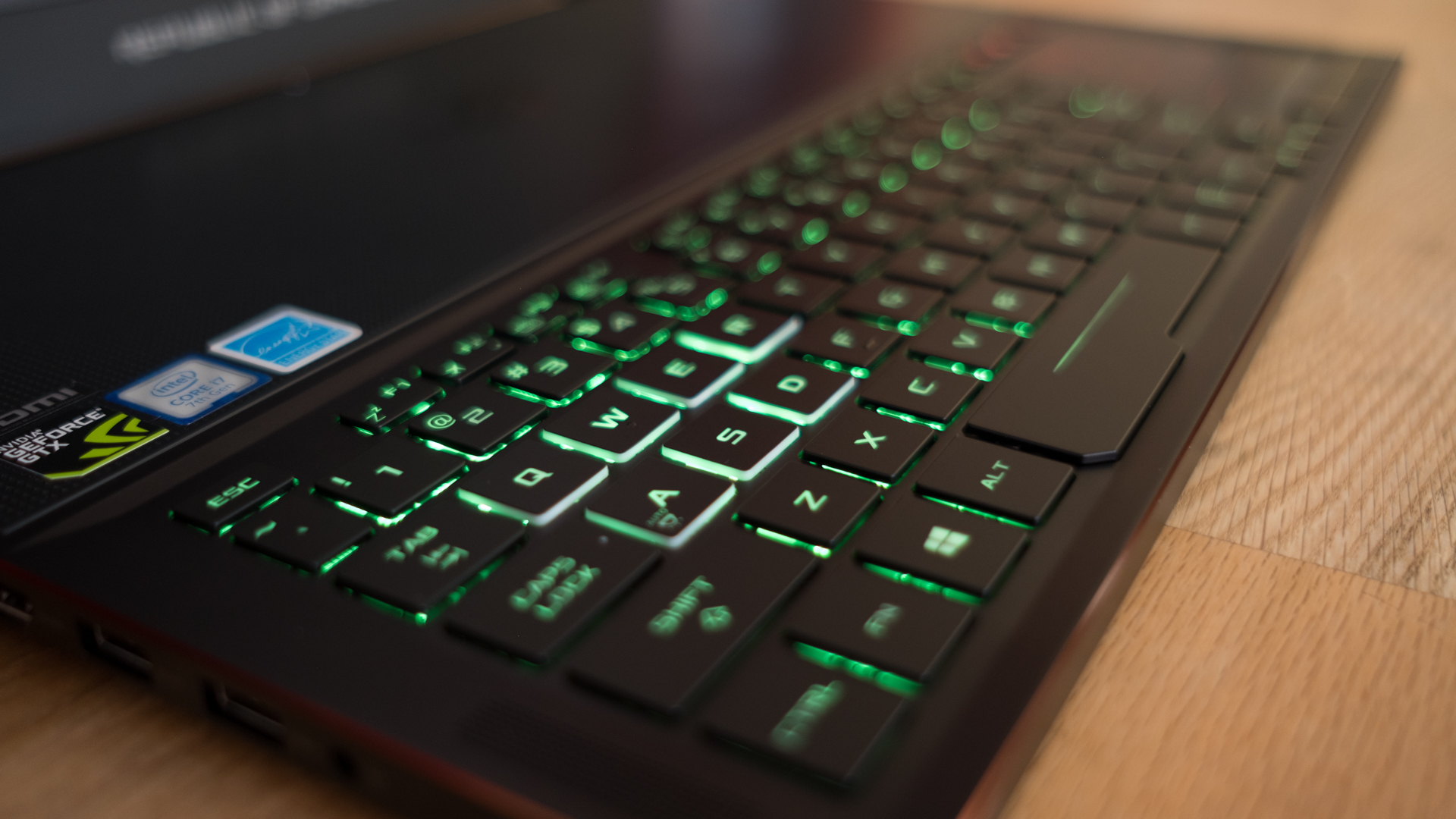
Business in front, party in the back
As part of the Zephyrus design, Asus opted to move all the components and cooling system to the rear of the laptop while migrating all the inputs to the front. It’s an arrangement we’ve seen on the MSI GT83VR Titan and Razer Blade Pro, and like those previous systems, it works well enough but not without some compromises.
The keyboard feels roomy with large keys despite having to share space with the side-oriented trackpad. There’s a decent amount of travel when hitting the keys, and a soft, mechanical note to go with it. However, the Zephyrus lacks the mechanical bite we’ve experienced typing on the Acer Predator Triton 700.
Since there isn’t any room for a palm rest, Asus includes a rubber wrist rest that sits right up against the laptop’s front lip. Unfortunately, this extra accessory gets grimy very quickly – even after just a few minutes of usage.
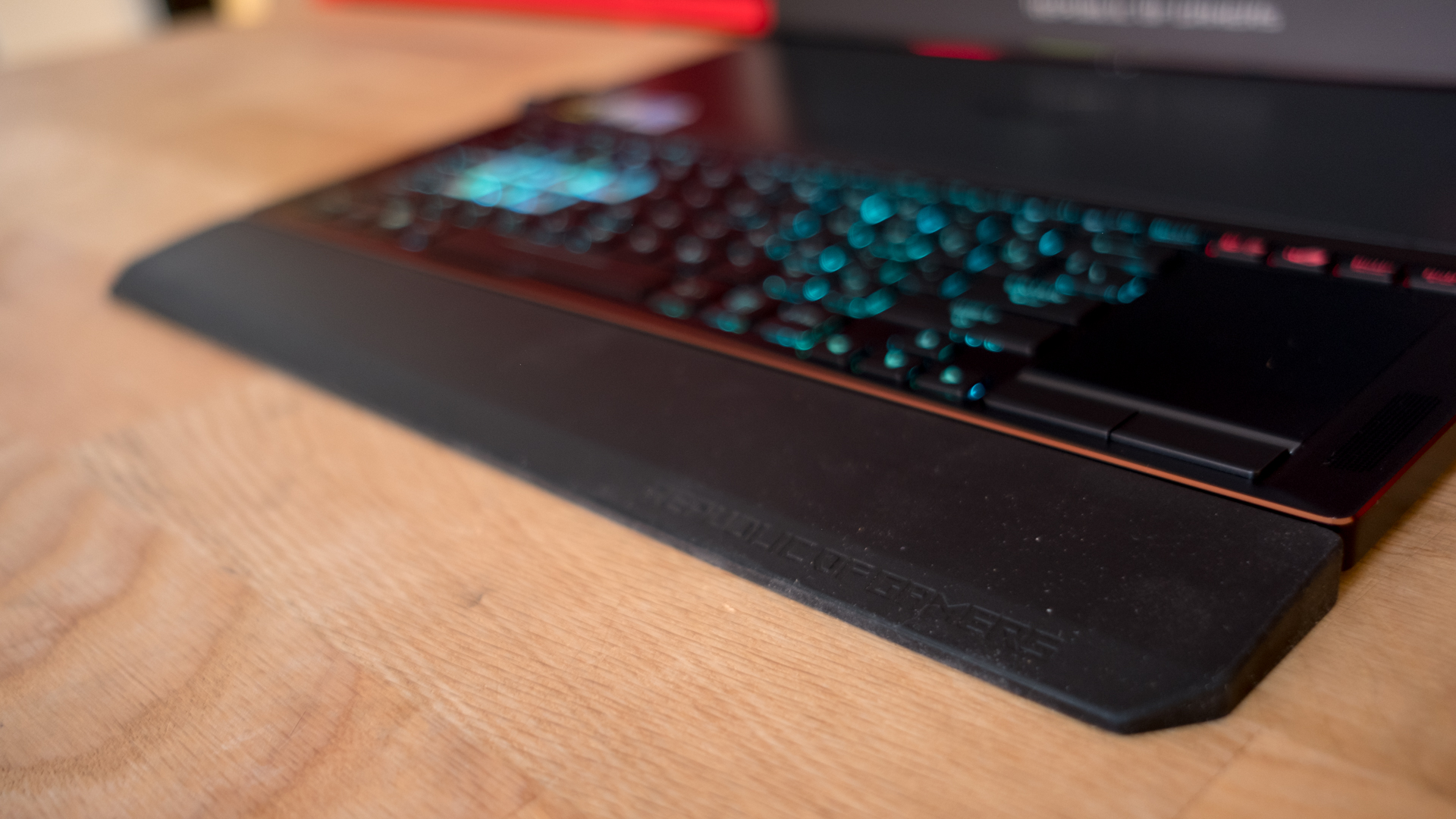
The extra palm rest also doesn’t make it any more comfortable to type with the laptop on your lap. Due to how close the keyboard is to the end of the notebook, you’ll have orient your hands in a T-Rex-like fashion to type anything.
The right-side touchpad also takes a little bit of getting used to. We still catch ourselves accidentally stumbling over the keyboard instead of the pointing device we intended to use. The touchpad itself is also a little too small for our liking and requires multiple swipes to move the cursor across the screen.
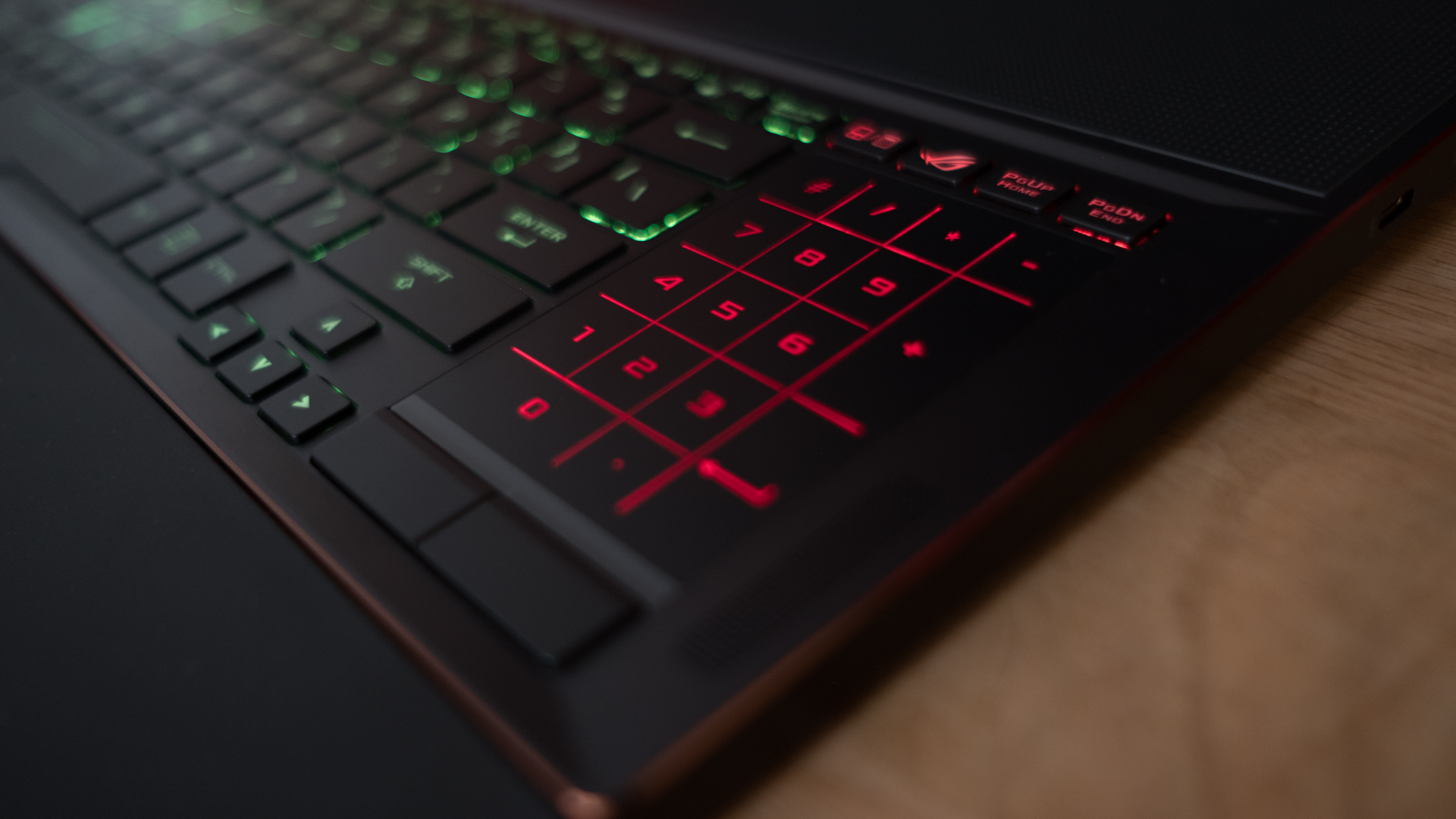
It’s good news, then, that Asus went with a glass-lined Microsoft Precision Touchpad that tracks perfectly and handles multi-touch gestures well despite accommodating no more than three fingers.
We also much prefer this to the Acer Predator Triton 700’s touchpad, which is planted directly in the center and behind the keyboard. The pointing device on the Zephyrus also comes with the handy feature of converting into a digital number pad with the press of a button.
- These are the best gaming laptops you can buy in 2017

Kevin Lee was a former computing reporter at TechRadar. Kevin is now the SEO Updates Editor at IGN based in New York. He handles all of the best of tech buying guides while also dipping his hand in the entertainment and games evergreen content. Kevin has over eight years of experience in the tech and games publications with previous bylines at Polygon, PC World, and more. Outside of work, Kevin is major movie buff of cult and bad films. He also regularly plays flight & space sim and racing games. IRL he's a fan of archery, axe throwing, and board games.

